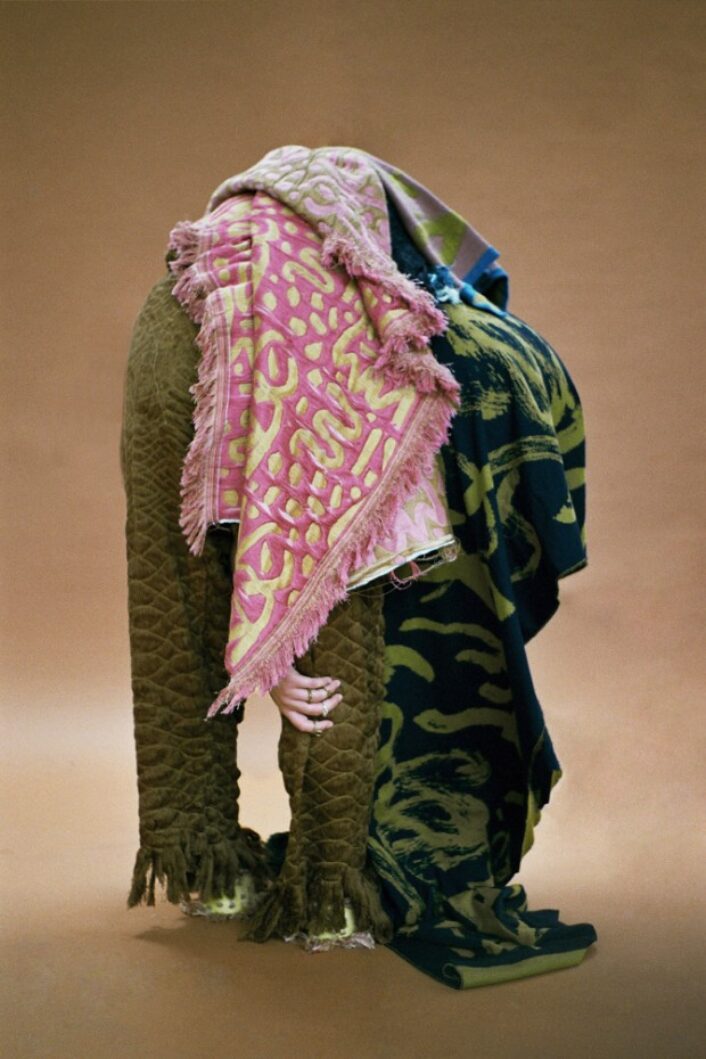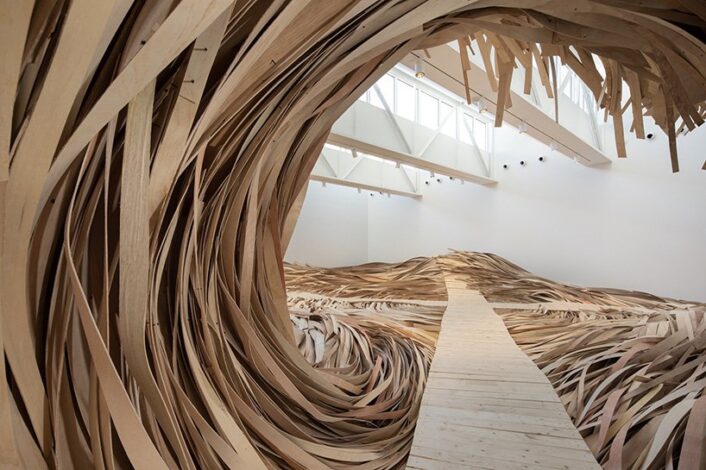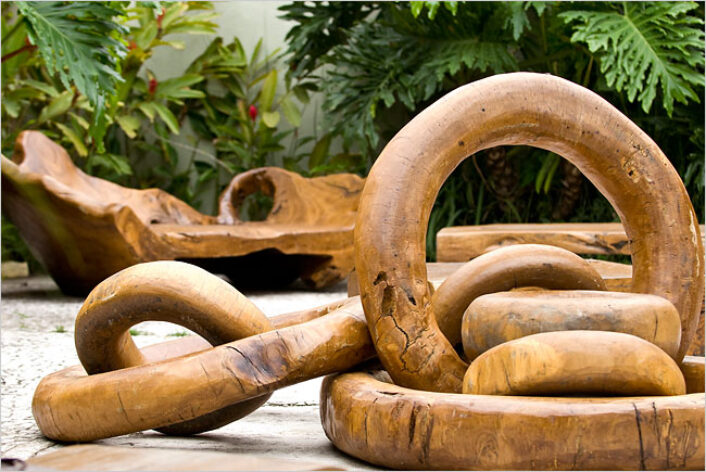Megan Offner describes New York Heartwoods’ process.
Video courtesy of: You Tube
Culture
Unwanted trees find homes!
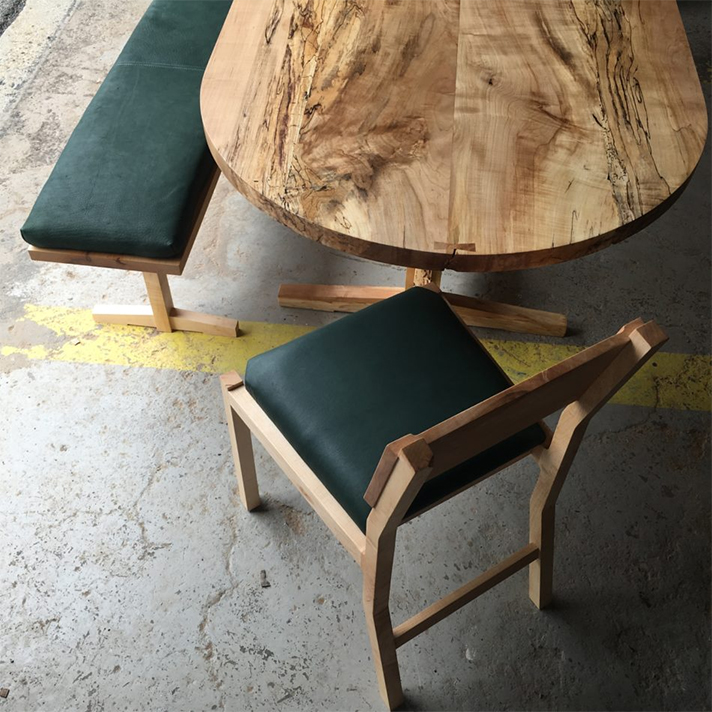
Lillana Bench, Black Walnut Hewitt Dining Chair, and Low Trestle Table.
Image courtesy of: 1st Dibs
Sustainability is a red-hot word today… a word that is at the core of Megan Offner’s philosophy. Offner spends her days with homeowners talking to them about the possibility of removing trees that are either sick or damaged. For homeowners in Kingston, New York, the emotional decision of extracting a beloved tree from their property, even though it might prove to be potentially dangerous, is very tough. Offner enables her clients to re-imagine their beloved trees as beautiful furniture; and that is often a blessing!
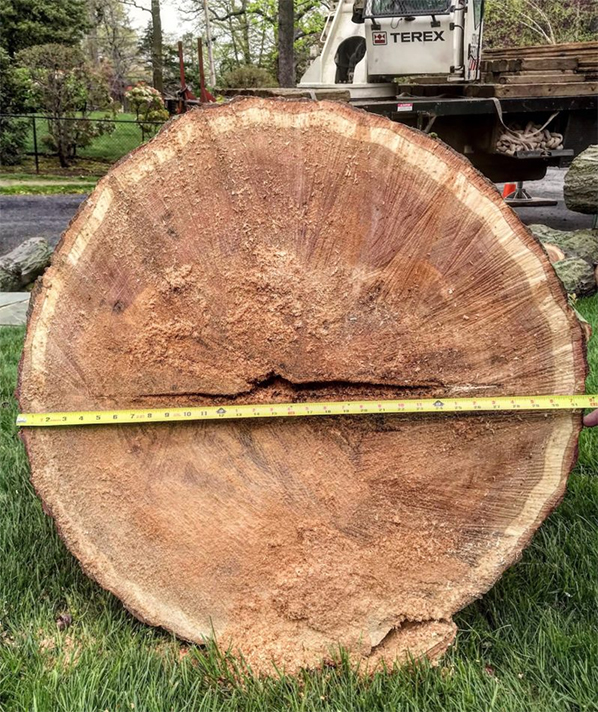
An enormous log that was chopped down because it posed the threat of falling onto a nearby house. The log was shaped into furniture.
Image courtesy of: 1st Dibs, photographed by: Jason Hammonds
Offner naturally gravitated to this career… it seemed like a natural fit given her outdoorsy upbringing in Missoula, Montana. She is the daughter of a grant-writer and spent a lot of time camping in national parks. After moving to New York City following college, Offner worked in set design for several years. 9/11 made her change her perspective; Offner quickly enrolled in a sustainable design program at Vermont’s Yestermorrow Design/Build School.
After earning her certificate, she began to volunteer in Upstate New York where she met Dave Washburn. Washburn taught a workshop on harvesting diseased or dying trees in order to improve a forest’s health. Washburn himself made a living transforming these trees into flooring boards.
Washburn was instrumental in introducing Offner to another artisan, fine-art framer Jed Bark. Bark purchased a sawmill in Warwick, New York in order to have lumber for his handmade frames. Offner trained on site and in 2011, she co-founded New York Heartwoods on Bark’s land. For the past eight years, Offner and Washburn have been working alongside one another.
Initially, the small company sold New York City designers lumber and slabs from fallen trees. Quickly however, they were getting a lot requests from tree services and landowners who wanted to turn their downed or ill trees into one-of-a-kind furniture pieces rather than see them made into mulch.
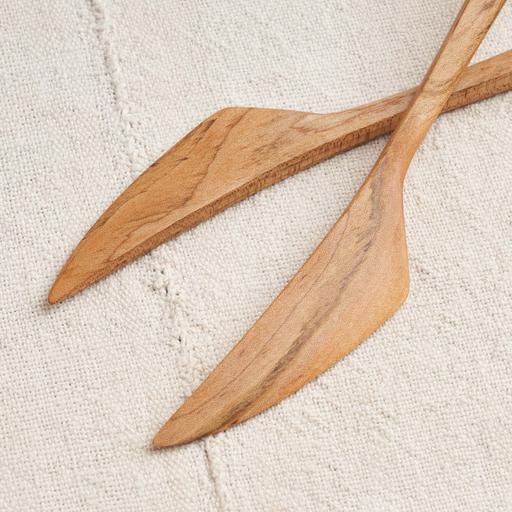
Two cheese knives in maple wood.
Image courtesy of: Housework Store
With a mission of forest regeneration, New York Heartwoods hopes that their impact is also impacting overflowing landfills. Unfortunately, forest creatures and an increased amount of severe weather has created an abundance of unhealthy trees. The trees collected and the means through which they are procured surpasses the guidelines of any sustainable lumber certification. Logs usually do not travel even five miles before being milled, and dried in New York Heartwoods’ Nyle dehumidification kiln.
As a result, the company is able to offer green, air- and kiln-dried lumber in addition cutting boards, kitchen accessories, and custom furniture.
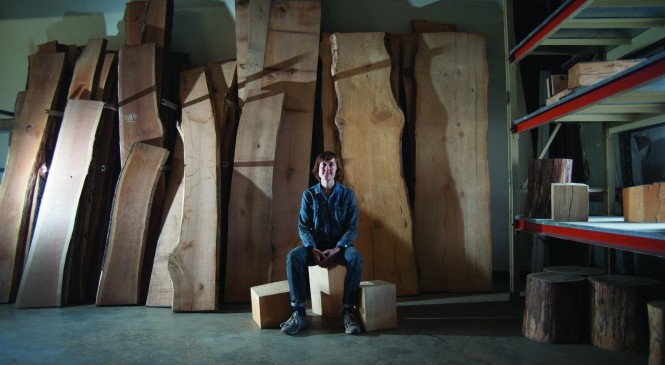
Offner loves the wood diversity that the Northeast offers. She says that the different species speak to her in different ways.
Image courtesy of: Upstate House
As layers of bark are stripped away, Offner loves to see the tree’s history revealed. She says, “You’re walking through the log, sawdust is flying in your face. It’s very visceral. There are pockets of ants or a squirrel’s nest or pieces of barbed-wire fence that the tree grew around.”
